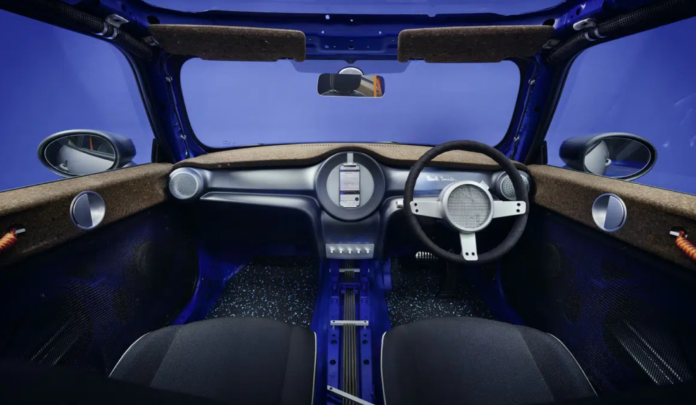“As the name suggests, the process began by completely stripping down a three-door MINI Cooper SE and reducing it to its structural essence. Only those elements that the designer viewed as absolutely necessary were then defined, implemented and put in place – with sustainability taking a front seat.”
“Raw materials are a very deliberate part of the exterior design. This meant the body was left in its unfinished state with no colored paint applied, but instead just a thin film of transparent paint to protect against corrosion. Grinding marks from the factory have been consciously left intact on the galvanized steel panels to clearly identify the car as a functional object and robust companion for everyday life. This intentionally rough-hewn effect was also dubbed “the perfect imperfection” by Paul Smith.”
A unique design of reused materials left in their imperfect state has caused a clash of opinions from automotive critics, environmentalists, and potential customers. The slightly unfinished look will be a stark difference from the sharp, laser focused attention to detail displayed by most brands. “The floor mats are made from recycled rubber. Their terrazzo-like pattern is a by-product of the recycling and manufacturing process and positively showcases the multi-colored constituent elements enjoying a second life as part of this material.”
Sher, D. (2021, August 19). Mini strip features parts 3d printed from recycled polymers. 3D Printing Media Network – The Pulse of the AM Industry. https://www.3dprintingmedia.network/mini-strip-by-paul-smith-features-parts-3d-printed-from-recycled-polymers/.
Execution can make or break this catalyst of more thoughtful design. The used-car market could see a multitude of second lives, with manufactures buying up supply from junk yards, auctions and smaller, local dealerships. This process is more expensive and time consuming, so it would need to be followed up with some sort of incentive of why companies should do this.




